Cooperative and common ownership
Certain changes to the cooperative form could permit the creation of enterprises that would not belong to anyone specifically but would be at the disposal of its users, workers and clients alike.
Company buy-outs and transformation into cooperative enterprises are often presented as a step in the construction of commons, as the various stakeholders – workers and users – are involved in the process of preserving and developing a resource. However, even though the cooperative form departs from the traditional rules of capital, it still remains essentially private in nature, which leads to frequent capitalist drifts when the cooperative is successful. What changes to the cooperative form would permit a better construction of the commons?
While realising the construction of commons is a co-activity between a number of stakeholders managing a resource25, cooperative ownership remains private in nature. Not all stakeholders can be represented in a cooperative and similarly, every person who participates in the life of the cooperative is not necessarily a member of it, as applications can sometimes be rejected. Likewise, to become a member of a cooperative a share must be bought, an investment made, albeit often minimal26, and this constitutes ownership. In addition, cooperative shares cannot be freely transferred; they are generally bought back by the cooperative itself27. Although all these elements are obvious deviations from traditional private ownership of a capitalist nature, it is still true that cooperative shares do belong to a clearly defined natural or legal person.
The third principle of the cooperative28 is that the company’s reserves cannot be disbursed. When a company makes a profit that is not distributed as salaries or dividends, it is accounted for as reserves which increase the value of the company’s equity29. In the classic regime of a capital company, shareholders have a right to the equity commensurate with their holdings. This means that the sales price of a share always includes this portion of the reserves. In cooperative law, due to the limited remuneration of the contributions, the profits made cannot be distributed to members and therefore become indivisible, which means that they belong exclusively to the cooperative and not to its members. This is why transactions are always done at the nominal value of the share. Do these indivisible reserves presage the construction of a common? This is far from certain.
Reserves build up as soon as the company turns a profit. In the competitive environment of today’s economies, these reserves, like the price of members’ shares, are a force driving the development of the company. Just like any capitalist shareholder, cooperative members do not want to see their shares depreciate. Nor do they want to divest themselves of reserves, once built up, as they represent both a security net for their shares and a way of developing the cooperative further. When a cooperative grows economically, it can often be observed that the cooperative spirit that powered the organisation at the beginning gives way to typically capitalist behaviour. One of the most obvious examples of this is the cooperative group Mondragón.
At the peak of its growth, the group was made up of 125 cooperatives linked through second level cooperatives and the governing body elected by a group assembly made up of representatives of the various cooperatives. Mainly comprising industrial cooperatives, the group had to face the issue of globalisation after Spain joined the European Union in 1996. To do so it introduced a policy of acquiring foreign companies which remained subsidiaries of Mondragón cooperatives and were not turned into new cooperatives. The workers of these subsidiaries kept the status of employees, reporting to the company management and did not become members like their counterparts in Spain. So the question is, why didn’t these employees become members? A number of different explanations have been mooted (legal difficulties, membership reserved to the Basque Country, etc.) which remain unconvincing. There is, however, another reason which is far more prosaic.
At the end of 2012, the group’s equity amounted to €3.95 billion, composed of 2.05 billion of shares and 1.9 of billion indivisible reserves. Unlike French workers’ cooperatives (SCOPs), the shares in Mondragón cooperatives are revalued. One might think that this fact would facilitate the entry of new members as they join the cooperatives on the basis of a share that is revalued every year. But it is not a full revaluation, as we can see from the existence of indivisible reserves which almost equal the number of shares. Even if these indivisible reserves do not belong to Mondragón members individually, they do represent a safety net for them and the potential for investment and development. So it is easy to understand that they are attached to them and want to keep them. From a strictly financial point of view, a new member of a Mondragón cooperative benefits from a discount of approximately 50% to access the group’s equity simply due to the build-up of these reserves. There is no doubt that current members are happy to introduce new people in the general and every day running of the cooperative, but doing so on a large scale and integrating employees of the subsidiaries bought is another problem entirely.
In other words, although the indivisible reserves are indisputably collective property, it is still private from the point of view of people outside of the cooperative. The reserves are indivisible due to the third pillar of cooperatives: limited remuneration of the capital. This does not resolve the issue of ownership linked to the existence of equity. A new approach could be tested, that of an equity-free company that is financed by debt alone. This would be an unprecedented political revolution that would pursue the idea of creating common property: power would no longer be defined in terms of holding company shares, but one’s place in relation to the production unit. Co-activity would grant the power to decide. Workers would manage production and users would be able to have their say on the direction and quality of production. But is this credible? Is equity really avoidable?
The world of finance justifies the existence of equity by stating that lenders need to see that owners have more to lose than lenders do: a loan entails a commitment to repay, regardless of how the company performs financially. It is, however, the shareholders who suffer first from a fall in activity or shrinking margin, provided that the capital is significant and the shareholders have something to lose. This is why financiers always check the amount of equity in the company before granting any credit to a capital company, often of the opinion that a ratio of one to one is reasonable. In the world of workers’ cooperatives, however, we can see that the approaches are much more aggressive.
We can refer here to the example of the Ceralep SCOP, based in Saint Vallier in the French department of Drôme. A manufacturer of very high tension electrical insulators, this company was liquidated in 2004 by its owner, an American group. The employees put together a plan to turn the company into a cooperative in order to save jobs. Funding of €900,000 was needed. All the banks, with the exception of Crédit coopératif, refused to finance the project. The cooperative movement - risk capital organisms from the SCOP movement and the Crédit coopératif - put up €800,000 in loans and quasi equity funding (shares). The employees were asked to contribute €100,000 which they did not have. In the end, they contributed €51,000 and the rest came from subscriptions from locals in support of employment. This enterprise has just celebrated its 10 year anniversary, during which the enterprise has increased salaries while still taking on additional staff, all this with an initial contribution of just 5.67% of the necessary operating costs, a ratio which is absolutely unimaginable in classic finance.
More recently a tech company was turned into a SCOP by its employees: SET. The company, which belonged to a bankrupt Swiss start-up, had been put up for sale. An American-Singaporean group, K&S, put in a bid. The staff, fearing they were going to lose the technology they had developed over a number of years30, wanted to put in a takeover bid. With only limited funds at their disposal (€160,000), they did not manage to find classic financial partners. Although they had not intended to turn the company into an SCOP, it was the cooperative movement that found the solution by issuing shares to build up equity so that the enterprise could borrow from the banks Crédit coopératif and CIC (a subsidiary of Crédit Mutuel). Out of a total €2 million, the staff only contributed 8% of this amount. After two years of being in business, the company is doing very well and continues to innovate and increase turnover.
These two examples – we could look at hundreds of others – show us that the cooperative movement and the world of finance have different approaches. It is not the equity that serves as a guarantee but the desire of workers to keep their jobs. In fact, if the legal form of the cooperative did not require members and therefore shares, cooperatives could work just as well without any financing from workers. If this can often be established (without claiming that this is always the case) can enterprise in practice work with debt as the only method of funding?
Debt financing means that workers are not doing any self-financing31 and that they therefore get the full market value for whatever they produce32. At a first glance this looks tricky as equity is subject to discussion and applying different accounting standards results in different equity evaluations. The difficulty is evaluating the shares33. But rather than trying to give them a value, shouldn’t we accept that all assets, whether tangible or intangible, must be financed? This is already the case for long-term tangible investments. A company that wants to invest in a piece of equipment that will be used for 20 years would, for example, finance the purchase by means of a bank loan for the same length of time34. The same should be done for any intangible asset such as research and development or a publicity campaign. A research and development programme must first be quantified and would be funded on a risk capital basis with variable rates depending on the business outcomes of the research. Similarly, a marketing campaign must be funded in advance for the period of time over which the company hopes to see results, probably with a repayment schedule that would quickly repay the bulk of the campaign then with smaller repayments corresponding to the staggered publicity achieved during the campaign. Finally, a large part of assets rely on short-term elements such as stocks, client receivables less short-term debts. This is a classic assessment of the running costs requirement. The idea is therefore that banks give companies lines of credit commensurate with this running costs requirement, which will be continuously re-evaluated based on each accounting statement.
Debt financing social enterprises is therefore technically possible. It would allow the creation of enterprises without equity that would not belong to anyone specifically but would be at the disposal of its users, workers and clients alike. Under this format, and unlike cooperatives that only differ from the capitalist way of thinking partly, the entity would not accumulate profits for itself. This means that workers would be remunerated at the exact market value of their work, perhaps enhanced or adjusted by subsidies or deductions. This presupposes the existence of a banking and financial services sector that would permit collective ownership of manufacturing means at different levels and represent the commons at higher levels in the company. In this context, investment decisions would be taken jointly by the company’s workers and users and a socialised credit agency that would agree to a funding proposal, thereby heralding an instance of commons held by them with a view to creating a federation of commons.
Notes:
25 Commun, Essai sur la révolution au XXe siècle, [Commons, an essay on the revolution of the 20th century] Pierre Dardot and Christian Laval, Editions La Découverte, 2014
26 Which is not always the case of workers’ cooperative, in particular those in the Mondragón group in Spain.
27 This is why they are variable capital companies.
28 http://www.entreprises.coop/7-principes-cooperatifs/85-decouvrir-les-cooperatives/quest-ce-quune-cooperative/166.html
29 Reserves are defined, among other things, as being the difference between the assets and liabilities.
30 The SET was set up in 1975. It was then bought out by a German electronics group and then by the Swedish start-up which saw the technology developed by SET as an asset to its own expansion.
31 Which would lead to the creation of equity.
32 By disregarding the regulatory mechanisms of redistribution of the wealth produced such as social security contributions.
33 Although debts are relatively easy to quantify, as they are sums of money that must be repaid, the lack of certainty in relation to evaluating equity is due to the assets, as the liabilities are always equal to the assets.
34 Or sometimes leasing. In this case, the equipment does not even belong to the company and is not listed as an asset.
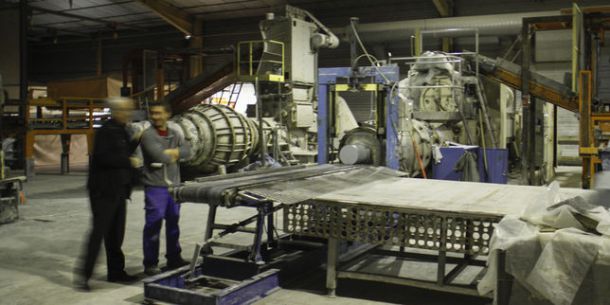
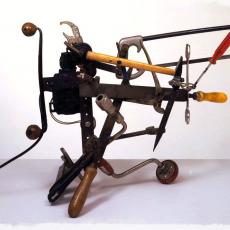
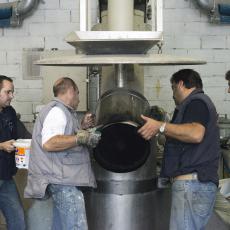
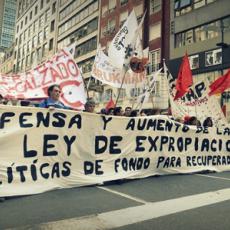
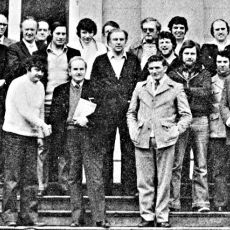
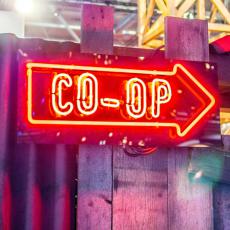
Comments
Post new comment